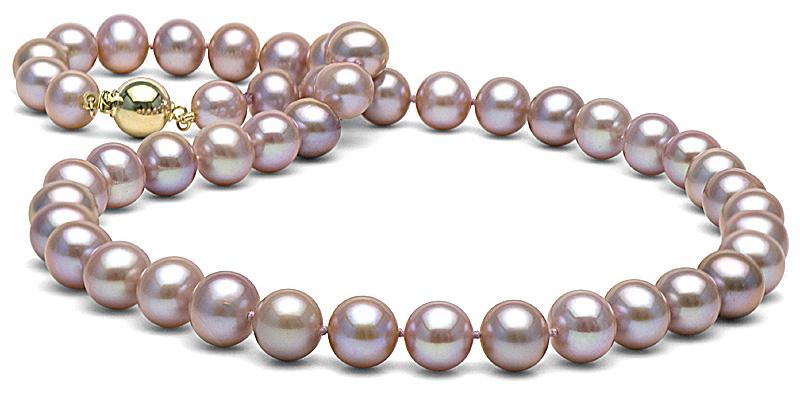Cultured pearls are grown in pearl farms, where mollusk is raised. A technician implants mother of pearl in an old mollusk and returns it into the water. They are kept in a safe environment and cared for. Every mollusk does not produce a pearl. Also, all the pearls that are produced are not of high quality. Thorough sorting from thousands of loose pearls is necessary to make a single princess length necklace with uniform pearl size.
Pearls are harvested both from freshwater and saltwater. Moreover, different mollusks produce different colored pearls. Let’s understand how the dark colored black beauties are produced.
Saltwater black pearls [Black dyed]
Akoya black pearls are round in shape with little variation amongst the pearl strands. Several people adore their uniformity and jet-black hues with faintest shades of greenish blue or midnight blue color. These overtones shine through in specific light conditions.
Pinctada Fucata Martensi found in saltwater are used to grow these pearls first before they get dyed. The size ranges from 5.5 to 9.5 mm. Pearls chosen to dye are the ones that lack in luster or possess some kind of flaws making them less appropriate to make salable jewelry.
Freshwater black pearls
Freshwater pearls are cultivated in China. The mussel called Hyriopsis Cumingii is found in rivers, ponds and lakes. They grow pearl size ranging from 6.0 to 10.0mm. The pearls harvested are dyed black.
Dyeing process involves soaking fully or half dried pearls inside black dye solution, which penetrates inside all the nacre layers. Results can be solid black or highly iridescent depending on dye type used. Dyed black freshwater pearls color can range from denim bluish to violet to copper or bluish-greenish.
Tahitian black saltwater pearls [natural black color]
Black lipped saltwater mollusk called Pincatada Margaritifera produces these black beauties. The Pearls come in variety of natural shades ranging from dark charcoal grey to light-dove grey
You will even see loads of overtones including blue green, silver, copper, peacock, cherry, green and more. Moreover, they are larger than the freshwater and saltwater black varieties. The size ranges from 8.0 to 16.0mm and more.




